#marys widowhood
Text
I just think if their positions were reversed, Mary would be quite capable of making Izzy Hands-level poor choices in reaction.
Imagine your husband, father of your children, drifting away emotionally. Admitting he finds his life with his family monotonous. Then this fearsome pirate in leather rocks up and he’s everything Stede enjoys daydreaming about over his books and while playing pretend with the children. And Stede is ignoring his family and ignoring whatever responsibilities rich white plantation owners had. And Mary ‘s social status is at risk because Stede is just running around town with Ed doing crazy shit. She has no idea if it’s possible that Stede might run away or worse decide to kick her and the children away out to starve because he was bored of them. (okay she knows Stede would never bear to see his wife and kids live less than comfortably. but it was a possibility women in most social classes had to be aware of.)
I’m simply saying I could see Mary ‘Skewer-through-his-ear’ Bonnet conspiring to make Stede dead and pin it on Blackbeard. or vice versa.
50 notes
·
View notes
Text

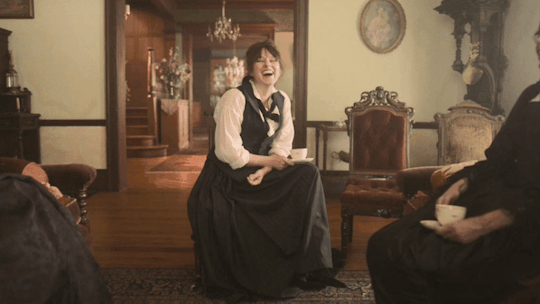


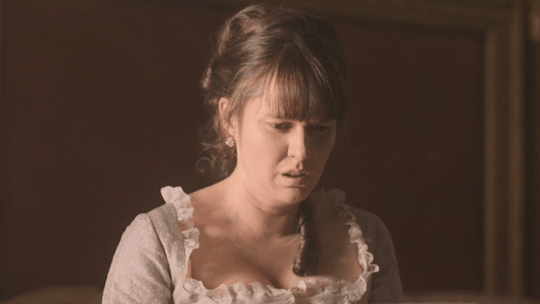

I appreciate how Mary's style changes after Stede leaves. While living with Stede, her clothing (while beautiful) feels quite restrained and binding. After Stede leaves, her clothing becomes so much more relaxed. <3
33 notes
·
View notes
Text
Seriously though, Ed is the widow, and Mary is the divorcee
#Every time Mary says 'widowhood isn't as bad' etc etc I just want to start wailing with the irony of it#Yeah I'm subjecting myself to episode 10 on purpose#Hoping for some catharsis in the face of the Big Sad#Every day that passes is a day further from when they were a real person#ofmd
19 notes
·
View notes
Text


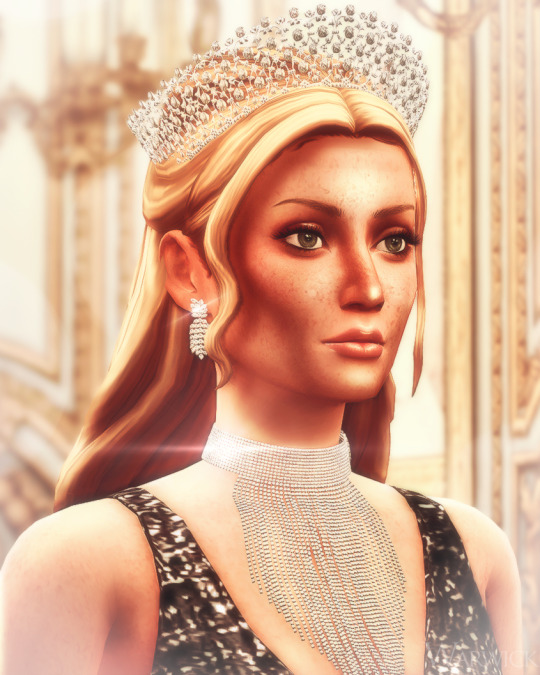

Sunderland's Royal Jewel Vault (16/∞) ♛
↬ The Boucheron Lattice Tiara
Another giant in the royal family's treasure trove, the Lattice Tiara, also known as the Gordon Tiara, takes some serious experience to pull off. Made by Boucheron in the early 20th century, the tiara wasn't originally of royal origin, passing from jewelry box to jewelry box for the better part of forty years. Eventually, in 1941, it was scooped up by the Hon. Mrs. Martha Gordon, a society hostess who was a friend of King James II and Queen Katherine, then the newlywed Duke and Duchess of Woodbine.
The Gordons were spectacular hosts, but by the early 60s the couple had racked up a significant amount of debt, fuelled by Mrs. Gordon's expensive taste in clothes and her husband's gambling addiction. These debts eventually caused the couple to be evicted from their West Warwick penthouse, with several of their belongings being sold or repossessed. To alleviate their friends' hardships, James and Katherine purchased several pieces of expensive jewelry from the couple.
The idiocy of Mrs and Mr Gordon is something to behold. Dowager Queen Anne wrote in her diary around the time of purchase. I warned Jimmmie against such an outrageous purchase, but he was adamant. Kitten and I look after our friends, he said. One wonders what those two have that's worth such a pretty penny! It's better not to indebt yourself to your inferiors, but I suppose I'm close-minded in my old age. Jim said that, too.
To this day the full extent of the purchase is unknown, but it is said to have included a diamond necklace, a pair of diamond chandelier earrings, a sapphire necklace, a gaudy fringe necklace, and at least two tiaras. It was the Boucheron tiara, with its delicate lattice patterning that became a favourite of Queen Katherine.
I admit, I've coveted this [tiara] for years [. . .] It never suited Martha's head, anyway. — Queen Katherine in a private letter, spring circa 1962
For the remainder of her life, Katherine wore the lattice tiara consistently. Even after her husband died in 1970, she continued to sport the tiara at high-profile events. The tiara was an interesting part of Katherine's tiara evolution, showcasing how the Queen graduated from small, light-weight tiaras, to heftier, more dramatic pieces. When Katherine died in 2018, it was inherited by her son, King Louis V, and in 2026, it was worn by Tatiana, Princess of Danforth for the first time. The upgrade in jewelry, despite the princess's widowhood, was viewed as a reformation of her status and role as the mother of the future sovereign.
HM Queen Katherine wears the Gordon tiara at the George League Gala concert on April 25, 1970. She pairs the tiara with teardrop earrings also acquired in the 1962 Gordon Purchase and Queen Matilda Mary's Wedding Necklace
HRH Tatiana, Princess of Danforth wears the Gordon tiara at a banquet for international heads of government on May 23, 2027. She also wears the Gordon fringe necklace. The banquet was attended by over 5000 delegates.
#warwick.jewels#✨#ch: tatiana#ch: katherine#ts4#ts4 story#ts4 royal#ts4 storytelling#ts4 edit#ts4 royal legacy#ts4 legacy#ts4 royalty#ts4 monarchy#ts4 screenshots
49 notes
·
View notes
Note
I saw some pictures of Queen Mary in old age, during her widowhood I suppose, sat at the table and there were photos of her children on it, but there was no photo of George. I dont think I have seen a photo of George in her table in all of her photos where she has sat beside it. A bit strange
I just looked up some interior pictures of Mary's while in widowhood and it does appear that she cut back on photographs in general. If you compare her Malbourough house bedroom from when she was Princess of Wales to her dowager bedroom it's noticeable! I have seen pictures of George in her bedroom and writing desk before widowhood, but I do agree with you that I am having a hard time finding a picture while she is a widow.
I don't think much about it since we do not have every picture of every desk, table, room she used as a widow!
9 notes
·
View notes
Text
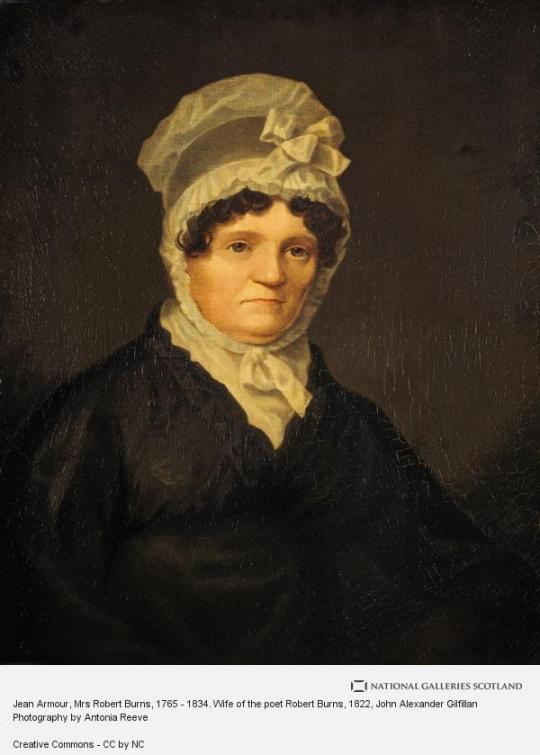

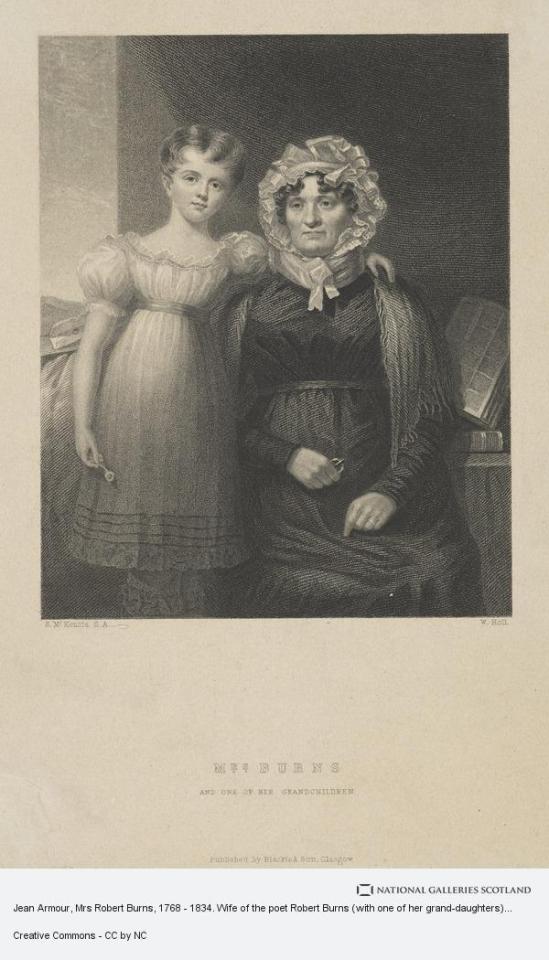
February 25th 1765 saw the birth of Jean Armour, “Belle of Mauchline” and wife to our National Bard Robert Burns.
For all his philandering ways when he was a young lad there can be no doubt that Robert Burns loved his wife, Jean was second oldest of the eleven children of stonemason James Armour and Mary Smith. She met Robert Burns on a “drying green” in Mauchline around 1784 when she chased his dog away from her laundry. According to Armour’s testimony in 1827, she met Burns again at a local dance and she “fell acquainted” with him.
Jean became pregnant with twins early in 1786. Her announcement, in March 1786, that she was expecting Robert Burns’ twins caused her father to be “in the greatest distress, and [he] fainted away”. Burns signed a paper attesting his intent to marry Jean, but her father disapproved of the union.
James Armour destroyed the “certificate of informal marriage agreement” between Robert and Jean and he removed his daughter to Paisley to prevent a local scandal. However, word had spread and the Mauchline Kirk recalled her on 10th June 1786 to admit that she was unmarried and pregnant and to confirm the father’s name. Burns was called by the Mauchline Kirk on 25th June 1786 and admitted his part in the affair.
His letters from this period indicate that he intended to marry Jean Armour as soon as they realized she was pregnant, but had been discouraged by her reluctance to disobey her father. By this time Burns was romantically involved with ‘Highland’ Mary Campbell and she was also pregnant. They were considering a move to Jamaica. The emigration fell through and Mary died in October 1786 before she could give birth.
Believing he had been abandoned by Jean Armour, he set about having himself declared single. Jean’s father, James Armour issued a warrant against him and Burns went into hiding.
Jean remained with her parents in the village of Mauchline, Robert was hiding out at the farm at Mossgiel. The couple continued to live apart even after the birth of their twins Robert and Jean, born 3rd September 1786. Following the success of The Kilmarnock Edition, Burns temporarily moved to Edinburgh. He returned intermittently to Mauchline, during which time Jean became pregnant again.
When Burns returned permanently on 23rd February 1788 he found Jean was destitute and had been expelled from the family home. They reconciled their relationship, and Burns found her a place to stay. On 3rd March 1788 she went into labour and delivered a second set of twins, two girls, one of whom died on 10 March 1788, the other on 22nd March 1788.
In the light of Burns’s new-found celebrity as a poet, James Armour relented and allowed his daughter to be married to him. Although their marriage was registered on 5th August 1788 in Mauchline, the parish records describe them as having been “irregularly married some years ago”. She and Burns moved to Ellisland Farm where they stayed until 1791 when they moved to Dumfries, where both would live for the rest of their lives. Jean Armour and Robert Burns had nine children together (he had at least another four by other women), the last of whom was born on the day of his funeral in July 1796.
Her widowhood and the straitened circumstances she found herself in after Burns’s death attracted national attention and a charitable fund was collected for her and the children. She survived her husband by 38 years, and lived to see his name become celebrated throughout the world. Twenty years after his death, his fame had reached such a point that his remains were removed from their modest grave in St Michael’s Kirkyard, Dumfries, and placed in a specially commissioned mausoleum. Here, Jean Armour was buried when she died in 1834. Statues of Jean were erected in Mauchline in 2002, and in Dumfries, opposite St Michael’s Kirk, in 2004.
There are many references to Jean in Burns’ poems, but the most famous is Bonie Jean.
There was a lass, and she was fair,
At kirk or market to be seen;
When a’ our fairest maids were met,
The fairest maid was bonie Jean.
And aye she wrought her mammie’s wark,
And aye she sang sae merrilie;
The blythest bird upon the bush
Had ne'er a lighter heart than she.
But hawks will rob the tender joys
That bless the little lintwhite’s nest;
And frost will blight the fairest flowers,
And love will break the soundest rest.
Young Robie was the brawest lad,
The flower and pride of a’ the glen;
And he had owsen, sheep, and kye,
And wanton naigies nine or ten.
He gaed wi’ Jeanie to the tryste,
He danc’d wi’ Jeanie on the down;
And, lang ere witless Jeanie wist,
Her heart was tint, her peace was stown!
As in the bosom of the stream,
The moon-beam dwells at dewy e'en;
So trembling, pure, was tender love
Within the breast of bonie Jean.
And now she works her mammie’s wark,
And aye she sighs wi’ care and pain;
Yet wist na what her ail might be,
Or what wad make her weel again.
But did na Jeanie’s heart loup light,
And didna joy blink in her e'e,
As Robie tauld a tale o’ love
Ae e'ening on the lily lea?
The sun was sinking in the west,
The birds sang sweet in ilka grove;
His cheek to hers he fondly laid,
And whisper’d thus his tale o’ love:
“O Jeanie fair, I lo'e thee dear;
O canst thou think to fancy me,
Or wilt thou leave thy mammie’s cot,
And learn to tent the farms wi’ me?
"At barn or byre thou shalt na drudge,
Or naething else to trouble thee;
But stray amang the heather-bells,
And tent the waving corn wi’ me.”
Now what could artless Jeanie do?
She had nae will to say him na:
At length she blush’d a sweet consent,
And love was aye between them twa.
11 notes
·
View notes
Text
Saints&Reading: Monday, April 8, 2024
march 26_April 8
Synaxis of the Archangel Gabriel

Troparion
Gabriel, commander of the heavenly hosts, / we who are unworthy beseech you, / by your prayers encompass us beneath the wings of your immaterial glory, / and faithfully preserve us who fall down and cry to you: / “Deliver us from all harm, for you are the commander of the powers on high!”
The Lord chose the Archangel Gabriel to announce to the Virgin Mary the Incarnation of the Son of God from Her to the great rejoicing of all mankind. Therefore, on the day after the Feast of the Annunciation, the day the All-Pure Virgin is glorified, we give thanks to the Lord and venerate His messenger Gabriel, who contributed to the mystery of our salvation.
Gabriel, the holy Archistrategos (Leader of the Heavenly Hosts), is a faithful servant of the Almighty God. He announced the future Incarnation of the Son of God to those of the Old Testament; he inspired the Prophet Moses to write the Pentateuch (first five books of the Old Testament), he announced the coming tribulations of the Chosen People to the Prophet Daniel (Dan. 8:16, 9:21-24); he appeared to Saint Anna (July 25) with the news that she would give birth to the Virgin Mary.
The holy Archangel Gabriel remained with the Holy Virgin Mary when She was a child in the Temple of Jerusalem, and watched over Her throughout Her earthly life. He appeared to the Priest Zachariah, foretelling the birth of the Forerunner of the Lord, Saint John the Baptist.
The Lord sent him to Saint Joseph the Betrothed in a dream, to reveal to him the mystery of the Incarnation of the Son of God from the All-Pure Virgin Mary, and warned him of the wicked intentions of Herod, ordering him to flee into Egypt with the divine Infant and His Mother.
When the Lord prayed in the Garden of Gethsemane before His Passion, the Archangel Gabriel, whose very name signifies “Man of God” (Luke. 22:43), was sent from Heaven to strengthen Him.
The Myrrh-Bearing Women heard from the Archangel the joyous news of Christ’s Resurrection (Mt.28:1-7, Mark 16:1-8).
Mindful of the holy Archangel Gabriel's manifold appearances and his zealous fulfillment of God’s will and confessing his intercession for Christians before the Lord, the Orthodox Church calls upon its children to pray to the great Archangel with faith and love.
The Synaxis of the Holy Archangel Gabriel is also celebrated on July 13. All the angels are commemorated on November 8.
VENERABLE MALCUS OF CHALCIS , MONK IN SYRIA (4th c.)

The Life of Saint Malchus, the Captive Monk, was written by St. Jerome in his monastery in Bethlehem. The composition is original in that St. Jerome reports the solitary man telling his own life story to him.
I was an only child and tenant of a small farm at Nisibis. When my parents were coercing me to marry because I was the last descendant of the family and their sole heir, I told them that I preferred to be a monk. With what threats my father assailed me, with what coaxing my mother pursued me to betray my chastity, you can judge by the fact that I left both home and my parents.
In Bethlehem, St. Jerome writes the story Malchus told him since I could not go to the East because of the proximity of Persia and the Roman guard, I turned to the West, taking very few provisions, merely enough to keep me alive. To be brief, I finally reached the desert of Chalcis. There, having found a community of monks, I placed myself under their guidance, earning my living by the toil of my hands and curbing the lust of the flesh with fasting.
After many years, the thought occurred to me that I should return to my native land while my mother was still alive (I had heard of my father’s death) to comfort her in her widowhood. After her death, I could sell our possessions, give part of the proceeds to the poor, erect a monastery with another part, and (why should I blush to confess my infidelity) reserve the rest to take care of my own needs.
My Abbot protested that my desire to return home was a temptation from the Devil and that under a virtuous pretext lay concealed the snares of our ancient enemy; in other words, the dog was returning to its vomit.
Many monks, he said, had been deceived in this way, for the Devil never comes without disguises. When persuasion failed, he begged me on his knees not to desert him, not to ruin myself, not to look back having put my hand to the plough.
Alas, miserable creature that I am, I did not relent. He escorted me from the monastery as if he were attending a corpse in a funeral procession. Bidding me a last farewell, he said: “I see, my son, that you are marked by the brand of Satan. I do not seek the causes nor do I accept excuses. The sheep that leaves the sheepfold straightway exposes itself to the teeth of the wolf.”
I decided to travel in company to decrease the danger of surprise attack by nomad Saracens, always wandering back and forth on the road. There were about 70 in my company, men women and children. Suddenly, Ishmaelites, riding upon horses and camels, descended upon us in a startling attack. We were seized, scattered and carried off in different directions. A woman of the company and I fell by lot into the hands of the same master.
The slave Malchus is content tending sheep in solitude and prayerWe were lifted up onto camels and traveled through the vast desert until we arrived at its heart, where the master’s household was. There I was assigned the task of pasturing the sheep and, in contrast to the evils I might have been subjected to, I enjoyed the comfort of rarely seeing my master and fellow slaves.
Alone in the desert, I lived on cheese and milk; I prayed continually; I sang the psalms I had learned in the monastery. In fact, I was delighted with my captivity and I thanked God for his judgment, for the monk whom I had nearly lost in my own country I had found again in the desert.
But nothing is ever safe from the Devil. How multiple and unspeakable are his deceits. My master, seeing his herd increase and finding in me nothing of fraud – for I obeyed the Apostle’s injunction that masters were to be served as faithfully as God himself – desired to reward me to better insure my fidelity. So he offered me in marriage the woman slave who had been taken captive with me.
When I refused and said that I was a Christian and it was not lawful for me to have for wife one whose husband was living (her husband had been captured with us and carried off by another master), my implacable master was seized with fury. Drawing his sword he started to attack me. If I had not made haste to throw my arm about the woman, he would have shed my blood then and there.
All too soon for me, night came on, darker than usual. I led my new bride into a ruined cave nearby. Realizing the full force of my captivity and, throwing myself down on the ground, I began to lament and sob for the monk I was on the point of losing. “Of what avail to have renounced parents, country, property for the Lord, if I now do the very thing that I would not do when I renounced them. What shall I do, my soul, perish or conquer?”
Prepared to turn the blade of my sword against myself rather than suffer the death of the soul, I told the woman, “Farewell, unhappy woman. I am yours to have as a martyr rather than a husband.”
Then to my surprise, the woman threw herself at my feet and beseeched me not shed my blood, for she said, even if her husband would return to her, she would preserve the chastity that captivity had taught her and would rather die than lose it.
“Take me, therefore, as a spouse in chastity,” she said, “and love the bond of the soul rather than that of the body. Let our master believe you a husband; Christ will know the brother.”
I confess that I was amazed and, admiring the virtue of that woman, I loved her more than if she were my spouse. Never, however, did I look upon her nude body; never did I touch her flesh, fearing to lose in peace what I had preserved in conflict.
Many days passed in wedlock of this kind. Our marriage rendered us more pleasing to our master; there was no suspicion of flight. Sometimes I was absent for a whole month, all alone, the trusted shepherd of the flock...to be continued


ISAIAH 14:24-32
24 The Lord of hosts has sworn, saying, “Surely, as I have thought, so it shall come to pass, And as I have purposed, so it shall stand: 25 That I will break the Assyrian in My land, And on My mountains tread him underfoot. Then his yoke shall be removed from them, And his burden removed from their shoulders. 26 This is the purpose that is purposed against the whole earth, And this is the hand that is stretched out over all the nations. 27 For the Lord of hosts has purposed, And who will annul it? His hand is stretched out, And who will turn it back?” 28 This is the burden that came in the year that King Ahaz died. 29 “Do not rejoice, all you of Philistia, Because the rod that struck you is broken; For out of the serpent’s roots will come forth a viper, And its offspring will be a fiery flying serpent. 30 The firstborn of the poor will feed, And the needy will lie down in safety; I will kill your roots with famine, And it will slay your remnant. 31 Wail, O gate! Cry, O city! All you of Philistia are dissolved; For smoke will come from the north, And no one will be alone in his appointed times.” 32 What will they answer the messengers of the nation? That the Lord has founded Zion, And the poor of His people shall take refuge in it.
GENESIS 8:21-9:7
21 And the Lord smelled a soothing aroma. Then the Lord said in His heart, “I will never again curse the ground for man’s sake, although the imagination of man’s heart is evil from his youth; nor will I again destroy every living thing as I have done. 22 “While the earth remains, Seedtime and harvest, Cold and heat, Winter and summer, And day and night Shall not cease.”
1 So God blessed Noah and his sons, and said to them: “Be fruitful and multiply, and fill the earth. 2 “And the fear of you and the dread of you shall be on every beast of the earth, on every bird of the air, on all that move on the earth, and on all the fish of the sea. They are given into your hand. 3 “Every moving thing that lives shall be food for you. I have given you all things, even as the green herbs. 4 “But you shall not eat flesh with its life, that is, its blood. 5 “Surely for your lifeblood I will demand a reckoning; from the hand of every beast I will require it, and from the hand of man. From the hand of every man’s brother I will require man's life. 6 “Whoever sheds man’s blood, By man his blood shall be shed; For in the image of God He made man. 7 And as for you, be fruitful and multiply; Bring forth abundantly in the earth And multiply in it.”
#orthodoxy#orthodoxchristianity#easternorthodoxchurch#originofchristianity#spirituality#holyscriptures#bible#wisdom#saints
3 notes
·
View notes
Text
Something I've seen come up a bunch in analyses of OFMD, typically but not solely relating to Mary and her marriage to Stede, is a lens focused on historical reality. But here's the thing - there is no reason to think that historical reality pertains to this show at all unless there's a specific fact that's directly stated to exist in canon.
Coverture as a legal principle rose in France in the Middle Ages and was transmitted to English common law with the Norman conquest; it passed from there to English colonies and then more or less became enshrined in literal law as they separated from England and its unwritten common law system. (The whole thing about married women not being guaranteed access to credit cards/sole bank accounts in twentieth century America? A vestige of coverture.) It derived from the Biblical tradition of a married man and woman becoming one flesh, and in practice it meant that a married couple were treated as one individual under the law, but in practice practice it meant that men were individuals under the law and women were, to some degree, possessions. This could and did coexist with loving marriages and with married women holding significant social and financial power, but it underpinned the legal relationship between husbands and wives.
But there's no evidence that this exists in the universe of OFMD, apart from the fact that married women take their husband's name, also a vestige of coverture and something that's been taken for granted for centuries. There is literally no suggestion that Mary is upset in her marriage because she's legally subordinate to Stede, or that she had to declare him dead in order to access their money (and to be clear, I'm not certain that a wealthy married woman who was deserted at home by her husband would have actually not been able to access money), or that he'd be entitled to money she earned by selling her paintings. If these principles existed in canon, Mary having a sexual relationship with Doug would have been sufficient grounds for legal separation or divorce, which would have cost her her children and her home, and there's no evidence that she was consciously considering and disregarding that either. None of the women at the widows' club mention being glad their husbands are dead because they weren't legally allowed to be their own people.
Marriage in OFMD is treated in a very modern way, apart from the initial arrangement of Mary and Stede's wedding (which is itself not accurate for the early 18th century, prospective spouses usually knew each other rather than being introduced by parents who'd already decided on the match). It's two people who live together, share a bedroom, and are supposed to have some form of emotional intimacy, to care about each others' interests and growth. They're supposed to take care of their children together. The problem in their marriage is that they can't develop that emotional intimacy a modern couple expects. Mary's monologue resembles the way a modern woman in an unhappy marriage might think about having the chance to redefine herself after losing her husband.
What would Mary and Stede's life together have looked like as actual wealthy planters in colonial Barbados? They would have had separate bedrooms and probably separate lives. They wouldn't have had much to do with their children, particularly not Stede. Mary would have been able to pursue art, but never in a public way, even if she were widowed (and obvs it would have not been cubist). Stede would not have been bound by Mary's approval or disapproval. A certain level of affection would have been expected, but not required, and a lack of emotional intimacy would have been considered Mary's fault - she would have been expected to conform to Stede's life and to be as pleasing as possible. Widowhood would have been more fraught because she would have control only over her jointure and dower lands, usually 1/3 of the property and whatever dowry she'd brought to the marriage; the marriage settlement would have set out trustees for Louis if he inherited before he came of age, and Mary would have had to apply to them for financial and legal assistance.
But also, their house would have been full of enslaved people - there would be people serving food during those awkward dinners, people looking after the children, people standing along the walls to wait for their orders, people fanning them in their bedroom at night. We've accepted that this doesn't happen in this world, for this version of Stede and Mary Bonnet, and it's a good thing for obvious reasons. The same thing is clearly true when it comes to the way husbands and wives are expected to relate to each other in it.
The rules of reality do not apply, in this canon, whether that's about physical reality (people can find each other randomly on the ocean in a dinghy) or historical reality (good people have no complicity in slavery or coverture). Arguments about what's going on in canon can't rest on historical details that aren't mentioned, because the historical setting of the show is the barest veneer over a modern story with characters who have modern concerns like self-actualization.
#actual 18thc aristocrats would have already known about each other's illegitimate children and have been cool with it#re: Stark Revelations I mean#I didn't even bring in the crocs but I mean Olu wears crocs and even has dress crocs#the only historical thing about the marriage is that they don't consider divorce#because that would ruin the story obvs#historical details only exist when the story needs them to#long post#ofmd#ofmd meta#our flag means death#history#my meta
79 notes
·
View notes
Text
I really love Mary as a character not only because she was always the one who tried to create something for herself in every situation, which we could see in her unhappy marriage and then in her happy widowhood, but also how the real storyline showed us, in the end, that her direction was always forward, she moved on and created life she wanted instead of what had been showed in Stede’s mind’s eye, that she was stuck in time and full of resentment. Mary was just not that. While for Stede she was a backstory character in his prequel, Mary wrote her own plot twist and Stede was like a footnote. For a pirate show, Mary had such wonderful storyline as a woman living in the land (where tradition and culture code were stronger than that at sea I guess). I really love how OFMD handled Mary’s story.
114 notes
·
View notes
Text
The Tenant of Wildfell Hall Thoughts: Chapters 45-50
We're back with Gilbert! I think I appreciate him being self-aware more than I did before. Definetly a step-up from the men we've dealt with for the last 30 chapters. I also appreciate Helen blowing him off, though. I know it's partly because of her faith but she's been through so much and she's not even out of the woods, she doesn't need the drama.
Was waiting to see Gilbert apologize to Lawrence. Love that they're back to being frenemies. "I want to like him but he pisses me off" is so real. I thought he wasn't actually going after Jane Wilson, though? Why does Gilbert have to talk him out pursuing her?
I was yelling at the page for Helen not to go back, even though I know Huntingdon was gonna die. Was genuinly surprised she took Arthur with her. I guess it's a lot to ask of Lawrence, and would give things away to the Linden-Car crowd, but still. A second escape would have been hard. Glad Benson took off, man deserves a better gig. As I expected, Miss Myers left the minute the going got tough, not that I blame her. Huntingdon managed to scare me with his recovery, even tought I knew he died, hadn't changed an ounce, has the nerve to ask for his mistresses, berate Helen... I'm glad his liver gave out on him, and I'm glad he did it entirely to himself. I found his resentment of Heaven genuinly funny. "You're only taking care of me so you can go to heaven..." So? Whiny asshole. Glad he died in turmoil.
I love Helen, Lawrence and Aunt Margaret taking a holiday together. Go enjoy your widowhood, you've BOTH earned it. I feel kind of bad for Gilbert but, like I said, Helen doesn't need the drama just yet, she's tired. All in due time.
I really enjoyed the where-are-they-nows! Happy ending for Mary Milward, yay! I'm glad Lord Lowboroughs' daughter got a loving stepmum, she doesn't deserve for her dad to hate her. I'm happy Lord Loughborough didn't give up on life. Great to hear Hattersley's staying on the straight path! Turns out there are decent men to be friends with, just not in London. Love horse-husbandry for him, fits with his chaos redemption. Hope I get to find out what happened to Hargrave, though. I don't like him still being on the loose.
#helen graham#girlbert markham#the tenant of wildfell hall#anne bronte#wildfell weekly#bronte blogging
3 notes
·
View notes
Text
I can't get over how Stede and Ed at the naval academy are just living in entirely different stories
Ed's just done something really romantic, leaving behind his old life pressures, he's pledged himself to this guy who he adores, who keeps asking that they leave together. They've been falling in love, they both know it, he's basically already admitted as much in front of the British navy. He's so ready, nothing to lose, a new life to start.
Stede isn't asking Ed to elope, though - he only wants to go back to the ship. In a way, he's asking Ed to undo the sacrifice he made, to sweep the grand gesture into irrelevance, certainly not to make an even grander gestures.
He loves Ed, but that's beside the point. He's not thinking of himself as part of a love story - he's a monster, the cause of tragedy. He can't have a happy ending. He should never have indulged himself - he should have pretended better. Chauncey's right. He has to shed his monstrousness, to atone.
(Except, Mary won't play along. Widowhood wasn't sad. She's thriving. She won't let him slink back in. It's hard to accept, but when he does, it gives him permission to join the love story Ed's been in.)
78 notes
·
View notes
Text
Forever My Guardian.

Woodstock Palace released a never before seen picture of the late Queen Mother with her daughter Queen Anne II of Wessex, posing together for a portrait in the Throne Room of St. Christopher Palace.
Caroline was born the daughter of King Bernard II of East Anglia. She became a member of the Royal Family of Wessex upon her marriage to King William V. As Queen-Consort, Caroline spent her time supporting her many charities and supporting her husband in his official duties.
After the death of her husband, Caroline planned to spend her widowhood away from royal court, in a self-imposed retirement. But her sense of duty and obligation to her adopted homeland motivated Caroline to resume her royal engagements once again in order to better support her eldest daughter Queen Mary I of Wessex.
She was a pillar of strength for for her daughter and the nation. Pioneering such events as the annual Charity Ball and leading the nation in morning when Mary I died suddenly at Fogmorre Castle.
When Queen Anne II of Wessex was thrust onto the throne after Mary’s death Caroline’s focus shifted toward the future of the monarchy. She became a guiding force in the lives of her two surviving grandsons, The Crown Prince William and The Prince George of Wessex, the next generation of royals.
In a break with tradition and following Caroline’s wishes, The Queen Mother will have a private memorial service in the Chapel Royal at Fogmorre Castle.

#sims royal#sims royal legacy#sims 4 royal simblr#sims 4 royals#sims 4 royalty#sims 4 royal family#sims 4 royal cc#sims 4 royal#sims royal family
10 notes
·
View notes
Text
4 French Royal Mistresses Who Made Their Mark on History
From Madame de Pompadour to Jeanne du Barry, these women wielded power in pre-Revolutionary France as companion to the king.
— By Erin Blakemore | June 23, 2023

This painting of Louis XV and his last mistress Madame du Barry was finished almost a century after their deaths. Royal mistresses like du Barry had impressive power through their access to the king. PaintingBy Gyula Benczur Via Bridgeman Images
Who’s the most important woman in France? During the French monarchy, it may not have been the queen, but the king’s official mistress—the maîtresse-en-titre.
She often ruled both his heart and his political decisions. As a result, French royal mistresses reached heights of power unknown to most women of their day. Here are the stories of just four of the many mistresses who left their mark in history.
Why Were Mistresses So Powerful?
Many European royals had extramarital affairs, but in France, mistresses enjoyed both royal favor and official recognition. Many queens were foreign-born, and all royal marriages were carefully arranged alliances. This led to everything from distrust to downright animosity between kings and queens, and often kings sought affection and companionship outside royal marriages.
As historian Tracy Adams notes, women at the time were acknowledged as men’s intellectual equals, but couldn’t legally compete with kings for their thrones. Because of this inferiority, they made the best choice for political advisors, Adams says. Most French kings from Charles VI took counsel from their lovers.

French sculptor Jean Goujon made this sculpture of Diana the Huntress with Diane de Poitiers’ likeness. Photograph By Mark Fiennes/Bridgeman Images
Agnés Sorel (1422-1450)
Also known as the “lady of beauty,” Agnés Sorel is often considered the first officially recognized French royal mistress.
Born into minor nobility, she rose to lady-in-waiting to Marie d’Anjou, wife of Charles VII of France. Soon after moving into the queen’s household in 1444, Sorel began an affair with Charles, from whom she received gifts of jewels and fine clothing. Sorel and the king had three daughters who survived infancy; the king recognized all three and gave them dowries when they married.
Sorel is best known for her fashion sense—she was excoriated outside of court for her love of low-cut and even open-fronted dresses and is thought to have inspired at least one iconic “Nursing Madonna” painting—and possibly her untimely death.
A few years after her affair with Charles began, she developed a stomachache and died after great suffering. The cause of her death remained an mystery until 2005, when researchers found traces of mercury poisoning. That mercury might have been a treatment for roundworms, but others suggest she was assassinated, by political enemies or perhaps even Charles VII himself.
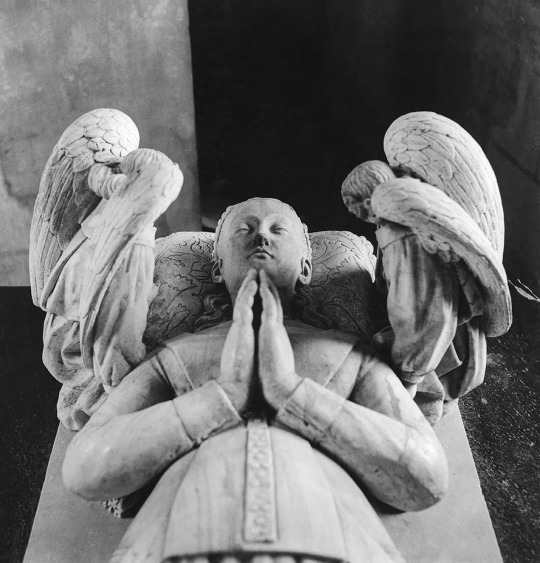
Agnès Sorel was interred in the Church of St. Ours, in Loches, France (seen here). Her heart was buried separately more than 200 miles away in the Benedictine Abbey of Jumièges. Photograph By Jean-Guillaume Goursat/Gamma-Rapho Via Getty Images
Diane de Poitiers (1499-1556)
de Poitiers was a young widow when she served in the court of King Francis I, impressing him with her savvy management of her late husband’s estate. Though Francis respected her, she made an even greater impression on his son, Henry. At seven years old, the prince was sent to live in Spain for more than four years as a result of his father’s loss at the Battle of Pavia. When Henry returned, de Poitiers, now in her thirties became the teenager’s lover.
Henry often wore Diane’s colors—black and white, representing both her widowhood and her namesake, the Roman moon goddess—and de Poitiers became his most trusted advisor and companion. Though banished briefly from court (accused of a plot to unseat King Francis), she returned to the court after Francis’s 1547 death.

This painting by Alexandre-Evariste Fragonard shows de Poitiers posing for sculptor Jean Goujon. Photograph Alexandre Evariste Fragonard, Via Fine Art Images/Bridgeman Images
Henry was named King Henry II, and though he had a long marriage to Catherine de’Medici that produced seven surviving children, his relationship with de Poitiers endured for decades. She arranged for the care of his children, looked after the crown jewels of France, and even wrote his letters, which she signed with the combined name “HenriDiane.”
In 1599, Henry was injured in a joust, again wearing black and white. As the king slowly died of sepsis, the queen forbade his mistress from visiting his bedside. After his death, de Poitiers lived in exile. She lived a comfortable life in her grand chateau until her death, possibly from poisoning from a gold concoction designed to maintain her youth.
Madame de Pompadour (1721-1764)
One of the most loved and most powerful royal mistresses was Jeanne Poisson, Marquise de Pompadour—often known as just “Madame de Pompadour.” She came from a family far removed from royal circles—her father was a government official who fled the country after a corruption scandal, leaving her with her now penniless mother. But after a fortune teller told her she would one day become mistress to a king, she was given a private education befitting the ultimate maîtresse thanks to a friend of her father’s, whom it is speculated was actually her biological father.

Composer Wolfang Amadeus Mozart meets Madame de Pompadour at Versailles in 1763. Painting By Vicente Garcia de Parades, Via Fine Art Images/Bridgeman Images
Known as “Reinette,” or “little queen,” she moved in the world of Paris salons, sharpening her conversational skills and gaining notice for her charm. She married Charles d’Étoilles, a financier, when she was 19. In 1744, she finally made her move, attracting Louis XV’s attention by promenading in a carriage near his hunting grounds. Intrigued and in want of a new mistress, he began meeting with her.
Soon, they took the affair public: At a lavish masked ball in the Hall of Mirrors, the king allowed himself to be seen unmasked, in intimate conversation with his new, still-married mistress. The king gave her the title of Marquise of Pompadour, dispatched her husband with a position as an ambassador at a far-off embassy, and gifted her a room with a secret staircase leading to his bedchamber and a variety of chateaus and royal gifts, including the building now known as the Petit Trianon.
Despite public condemnation of her influence, she encouraged the king’s excesses, promoting his support of the arts, staging private theatricals for his amusement, and even convincing him to support a variety of Enlightenment-era luminaries, including the authors of the first French encyclopedia. Her health was poor, and the king lovingly nursed her on her deathbed, where she died at just 43 years of age.

This bust of de Pompadour was completed in 1751 when she was thirty years old. It was likely meant for her residence château de Bellevue, which was finished the same year. Sculpture By Jean-Baptiste Pigalle, Via The Met
Jeanne du Barry (1743-1793)
Louis XV’s next mistress would play a part in both his reign and the downfall of the French Empire. After Pompadour’s death, Louis fell in love with Jeanne Bécu, a prostitute turned high-society courtesan who seduced him with her beauty and her reputed sexual charms despite a 33-year age difference. Refusing to have an official mistress who was not an aristocrat, the king arranged for her to marry Count Guillaume du Barry, then moved her into Versailles.
Louis’s reputed excesses on behalf of his mistress shocked all of France. He gave Madame du Barry magnificent jewels and clothing and refused her nothing, even gifting her a Bengali slave, Zamor, who acted as her personal servant. He also gifted a diamond necklace so massive the country could not afford to pay for it.
News of the necklace and other extravagances continued to rile France even after Louis XV’s death, after which du Barry was banished from court.
Revolutionaries eventually accused Marie Antoinette, wife of Louis XVI, of purchasing the necklace from a corrupt cardinal. du Barry was also swept up in the nation’s deadly revolutionary fervor when Zamor, who had endured years of her exploitative treatment, denounced her to revolutionaries for supposedly financially aiding counter-revolutionaries. She was arrested during the Reign of Terror and beheaded in front of a sneering crowd in 1793.
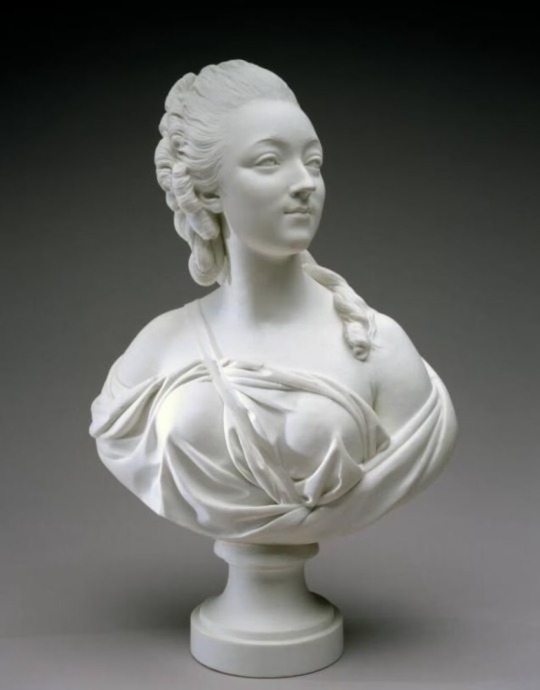
This bust depicts Marie-Jeanne Bécu. During her reign as official royal mistress, many portraits of du Barry were undertaken by leading artists, including French sculptor Augustin Pajou. Sculpture By Augustin Pajou, Mfah
5 notes
·
View notes
Note
Hello! I was wondering if you could tell me more on Mathilde Ludovika in Bavaria? From all of Elisabeth's sisters, she's the one I know the least about, and it's frustratingly hard to find (translated) information on her online or in local stories/libraries where I stay 😭.
I'd love to know more on her childhood, her marriage (did she really have an illegitimate child? the idea that Marie had one seems doubtful to me but idk much about Mathilde so I can't say) and her widowhood. The fact that both she and Marie lived through WW1 is insane, I know Marie supported Germany and I'm guessing Mathilde did the same?
Also the fact that she outlived all her siblings 💔
Hello! Sorry for the delay. I got a very similar ask about Mathilde which I answered here!
And yes, I always thought it was a bit emotional that she died so soon after Marie, who was practically her twin. It must have been weird for her to live in a world without her sister, even if only for a few months.
2 notes
·
View notes
Text
Eleanor of Aquitaine- Grandmother of Europe.
(part II)
Second Marriage
When Eleanor returned to Poitiers, Henry II duke of Normandy ordered his younger brothers to kidnap Eleanor and claim her lands, however that was not needed,because Eleanor herself sent a messenger telling Henry to marry her at once if he wanted. On May 18 1152 the couple married in secret. However, Henry and Eleanor were even more closely related, while her first marriage was annulled due to Consanguinity. Even more, A marriage between Henry and Eleanor's daughter Marie had earlier been declared impossible due to their status as third cousins once removed and now he was marrying the mother of the previous refused match. The reason for the secret marriage was that Eleanor’s choice for her second husband was a problem: as the rulers of French vassal states, Henry and Eleanor needed permission to marry from the king of France, and there was little chance that Louis was going to approve the marriage, besides Eleanor met Henry in 1151, well aware of his claims to English throne and his wealth, she took certain interests in him, later historians claim that as seed of divorce was already sprouting that time, so future couple came to an agreement that once she was divorced they would marry, that would explain why they started to act immediately after divorce. However, the source those historians mentioned from Eleanor's contemporary scribe did not survive.
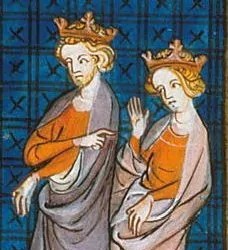
On October 25 1154 Henry became king of England and pregnant Eleanor was crowned queen on 19 December of the same year. On 28 February 1155 second child Henry the young was born, first child being William IX, Count of Poitiers. Over the next 13 years the coupe had 8 children, five sons and three daughters:
William (17 August 1153 – 1156)
Henry the Young King (28 February 1155 – 11 June 1183)
Matilda of England (June 1156 — June/July 1189)
Richard I (8 September 1157 – 6 April 1199)
Geoffrey II duke of Brittany ( 23 September 1158 – 19 August 1186)
Eleanor, queen of Castile (1161– 31 October 1214)
Joan queen of Sicily (October 1165 – 4 September 1199)
John Lackland (24 December 1166 – 19 October 1216)
Despite so many children Henry was by no means faithful of Eleanor and had numerous mistresses and illigitimate children. While Eleanor resented Henry's mistresses, she certainly had no hostility towards their children as when Geoffrey of York was acknowledged the Queen took him under her care.
Marriage has other problems as well, both parties were highly political, ambitious and stubborn. Aquitaine openly rejected the authority of Henry and declared that they would obey only the rightful duchess. After the third marriage and widowhood of Eleanor's first husband, marriage between "Young Henry" and Margaret of France was arranged,that is thought to be the last known co-operative decision of the couple,because after 6 following years of constant arguing,conflicts and power play, marriage was finally stained per Eleanor's discovery of Henry's affair with Rosamund the fair. Following the marriage of Matilda, third daughter of Henry and Eleanor, in 1167 Eleanor returned to Poitiers.
Court at Poitiers
While residing at her home, she hosted a legendary court. Most of the stories are just folklore and rumors, it is obvious that she was a great patron of art,poetry and literature. However, the famous "court of love" is mostly rumor. First of all, Courtly love was widely popular in France even before her birth,which I mentioned was the reason of her birth in the first place, therefore she could not have "invented" it as some mention. 12th century author Andreas Capellanus, a famous admirer of love of his time, mentions how Eleanor and her daughter Marie, listened to young lovers, acted as jury and supporting love out of wedlock as heartbroken queen rejected the coexistence of love and marriage. However, this is pure fiction created by Capellanus,as Marie and Eleanor did not spend that much time together, but it's based on Eleanor's actual support of teaching manners and kind of creating "etiquette" regarding treatment of spouses.All that can be said is that her court at Poitiers was most likely a catalyst for the increased popularity of courtly love literature in the Western European regions.

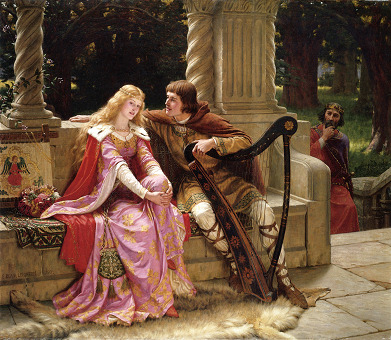
Different paintings inspired by the court of love.
Involments in Rebellion (1173-1174)
In 1173 the young Henry(junior king of England from 1170) started the Rebellion against his father, which Eleanor supported. The young king went to Aquitaine where Eleanor and his two younger brothers Geoffrey and Richard resided. Contemporary historian Roger of Hoveden claims that the queen sent her younger sons to France "to join with him[Henry the young] against their father the king."Once her sons had left for Paris, Eleanor encouraged the lords of the south to rise up and support them. In 1174 Eleanor herself left Aquitaine,but was captured and imprisoned by her husband. Young Henry was pardoned as, likely due to the involvement of Eleanor and Henry himself not wanting to punish sons, blame was put on barons,who were punished for manipulating young prices to do the evil deed.
Imprisonment
From 1174 to 1189 Eleanor spent her life as a prisoner. She was put under the house arrest in various English palaces,where she was under supervision of the king. She was permitted to see her sons only during special occasions, namely Christmas. That is the time she grew particularly estranged to her husband and favourite son Richard. During the first nine years of imprisonment she was minimally active in politics, but when King's mistress Rosamund the fair suddenly died in 1176 under quite mysterious circumstances, rumors rose that it was Eleanor who arranged her death by poisoning. Legend has it that Eleanor sneaked into her rooms and offered her to die either by dagger or by poison, which she eventually chose. Other legends say that she was roasted alive between two fires or her arms were cut off in the bath. However, all of them appear either in the 14th century's "French chronicles of london" or during Elizabethan era tales and balades, so they can not be true, however considering no recorded disease or accident around Rosamund,it seems quite sensible that Eleanor, who had certain freedom, could have bribed one of Henry's servant to poison her. The theory is the oldest, appears in the early 13th century, little time after Eleanor's death. It's justified by Rosamund's fault in estranging the couple and Henry's supposed plans to use Rosamund to force Eleanor into divorce. What really happened is unknown and the incident was quickly forgotten.
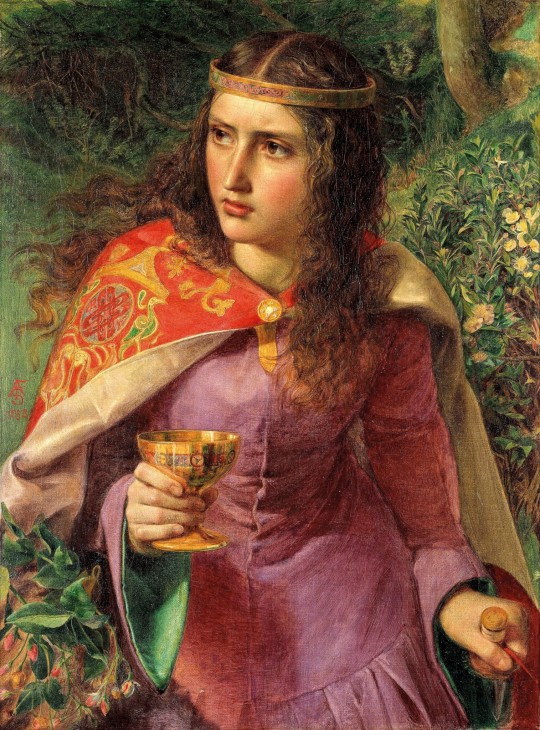
Queen Eleanor as depicted by Frederick Sandys. We can see her carrying a bowl of poison and a dagger.
On Saturday, 11 June 1183, the young king realized he was dying and was overcome with remorse for his sins. When his father's ring was sent to him, he begged that his father would show mercy to his mother, and that all his companions would plead with Henry to set her free. So Eleanor was set free and permeated to see her son one last time.Her major rise to power started in 1183 when Philip of France demanded lands in Normandy,which was the property of deceased young Henry. However, lands in Normandy was Eleanor's prior passing it to son, so after his death it should have been returned to her, as a result, Henry summoned Eleanor and sent her to Normandy, where she spent several months,but returned to England in 1184, after that she was technically free,but under supervision. She would often accompany her husband and even took part in deciding some political affairs. Upon the death of her husband Henry II on 6 July 1189, Richard I succeeded, One of his first acts as king was to send William Marshal to England with orders to release Eleanor from prison. During widowhood she gained power she never had before.
The Queen mother
After her release Eleanor rode to Westminster and received the oaths of fealty from many lords and prelates on behalf of the king. She would then act as regent for her son,who was fighting long wars. On 13 August 1189, Richard left for Portsmouth. Later he was absent from 1190 to 1194 for crusades and later was in captivity of the holy Roman emperor. During that time Eleanor was an unofficial regent, overseeing any decisions made by council and even went to Austria to personally arrange the release of her son. Her influence is evident by letters to the Pope,the holy Roman emperor and the king of Castile. Richard died in 1199 and Eleanor then became a major force in the reign of John Lackland.under the terms of a truce between King Philip II and King John, it was agreed that Philip's 12-year-old heir-apparent Louis would be married to one of John's nieces, daughters of his sister Eleanor of England, queen of Castile. Eleanor, who was 77-78 that time, herself went to Castile to choose one of the princesses. Same year she was kidnapped by Hugh IX of Lusingan.(that was not the first and last attempt of kidnapping her, actually it was the third out of four known occasion), she however arranged her freedom herself. In Castile, she remained for two months and returned to England after choosing Blache as the bride. The trip is said to affect her health.

Despite reducing health and increasing age, intrigues were not ending in her life, the war broke between John and Arthur the son of Eleanor's second son Geoffrey. The reason for the conflict was the succession to the English throne. After Richard I died without an heir, the throne was supposed to pass to the following brother Geoffrey,who died before Richard,but had a posthanous son Arthur,who was heir over John. Eleanor however supported the claim of John, as a reason very familiar instance of her life took place, she was kidnapped...again. After negotiations she was released with the condition that she would withdraw from politics and go to nunnery(which could have been her own choice). She died soon after in 1204 and was buried with her second husband in Fontevraud abbey.
one of many of her achievements I would like to underline the most is her age. after giving birth to 10 child in 12th century,being imprisoned for 9 years in castle, went to crusades, traveled in Austria and castle in her late 70's, she still managed to live up until 82 years, almost twice as much as avarage lifespan of her time.
My next post is going to be about women in the Ottoman empire so...
6 notes
·
View notes
Note
Did mary advise george on state related issues, like did he ask for her advice? Because I read that king Edward vii advised George to show documents to Mary
This topic is slightly confusing because I think many sources give mix messages. I personally don't think it's true that she was an advisor for him concerning state issues. She definitely (like Prince Philip) had power concerning the household, and was overall an imposing figure behind the scenes. She also did have a sort of womanly power over him but it was more complex then her just telling her opinions, and him following.
If you read her letters to George concerning state issues, when she gives an opinion she always phrased it almost like he didn't like her advising him and was attempting to soften her statement. You never read a letter where she says I think you should do this. (She was too smart to do that and knew that is not how you get a man to do what you want).
Mary definitely enjoyed being George's confidant and was very strategic on maintaining his confidence, and only said what she thought about a situation, if she felt that is what he wanted. Which often I don't think he did (haha), not because he didn't value her opinions, but like most couples, after a long hard day you just want to vent to your partner. George was probably bombarded all day with opinions of what he should do.
This topic has a range of various opinions, I think popular images of Mary is as someone who had overall power of George, but the problem with that view is that Mary in her heart was a traditionalist who really didn't want to "wear the pants", and George had a huge personality, and was not easy to control. Mary did enjoy politics and being in the center of things, but also understood her role as a woman during those times.
On a side note, Mary once said during her widowhood, that what she missed most about George (and her marriage in general) was talking about things freely. I personally just think she seemed really guarded talking about politics (esp. during WWI) with George out of fear of upsetting him.
13 notes
·
View notes